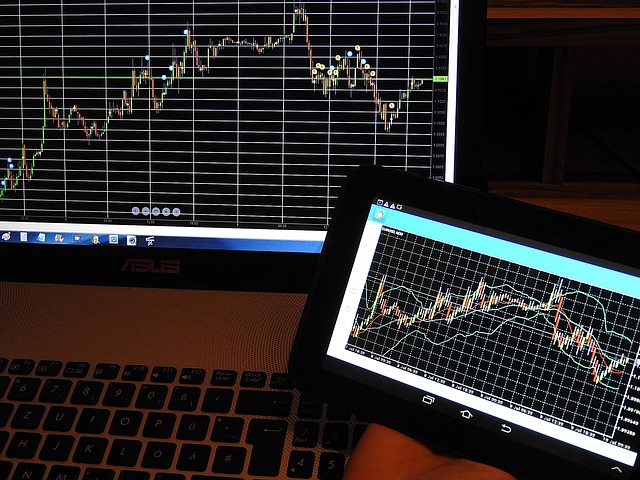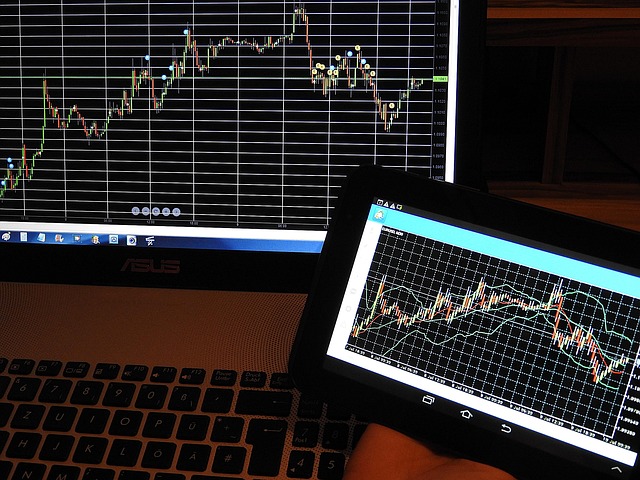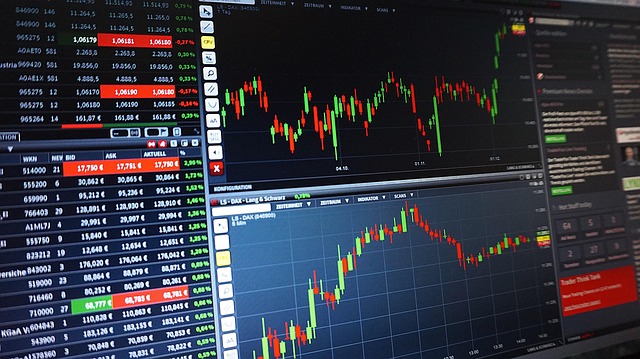Are Forex Trading Bots Profitable? An In-Depth Analysis of Opportunities and Risks
Author: Jameson Richman Expert
Published On: 2025-08-14
Prepared by Jameson Richman and our team of experts with over a decade of experience in cryptocurrency and digital asset analysis. Learn more about us.
Over recent years, the allure of forex trading bots has grown exponentially among retail and institutional traders alike. These automated systems promise to deliver faster, emotionless, and potentially more profitable trading by leveraging cutting-edge technology that can analyze vast datasets, identify trading signals, and execute transactions at lightning-fast speeds. Given the high liquidity, leverage opportunities, and 24-hour operational cycle of the forex market, many traders view automation as a way to capitalize on fleeting opportunities while minimizing human biases, emotional reactions, and errors. However, despite their technological sophistication and appeal, the fundamental question remains: can forex trading bots sustain consistent profitability over time? This comprehensive analysis explores the mechanics, strategic advantages, limitations, empirical performance data, and future outlook of forex trading bots, supported by expert insights and recent research findings.

Understanding Forex Trading Bots and Their Core Functionality
Forex trading bots are highly advanced algorithmic systems designed to fully automate the trading process. They integrate multiple technological disciplines, including technical analysis, statistical modeling, artificial intelligence (AI), and machine learning (ML), to make data-driven trading decisions. These bots operate by continuously monitoring live market data—such as price movements, trading volume, order book depth, economic indicators, and news sentiment—and executing trades based on predefined parameters or adaptive algorithms that learn from ongoing market conditions.
Modern forex bots employ a variety of trading strategies, including trend following, mean reversion, scalping, arbitrage, and breakout methods. Many incorporate AI and ML components that enable them to improve their decision-making processes over time by analyzing historical data, recognizing patterns, and adjusting strategies dynamically. Additionally, sentiment analysis—processing news feeds, economic calendars, social media signals, and geopolitical developments—can be integrated to enhance predictive accuracy, especially during volatile or uncertain times. This multifaceted approach aims to give traders a competitive edge in fast-moving markets where rapid response times are crucial for profitability.
Advanced bots also feature sophisticated risk management modules. These include stop-loss orders, take-profit targets, trailing stops, and position sizing algorithms designed to control downside risk, optimize trade entries/exits, and maintain strategic consistency. Typically, such systems are accessible via trading platforms that support API integration, enabling seamless deployment, management, and real-time adjustments of automated strategies. The combination of technical and fundamental analysis, coupled with AI-driven adaptability, underscores the complex architecture of effective forex trading bots.
The Pros and Cons of Using Forex Trading Bots
Automated trading systems have gained popularity due to their promise of speed, precision, and unwavering discipline. However, like any investment tool, they come with distinct advantages and notable limitations that traders must weigh carefully.
Advantages
- Consistency and Emotional Discipline: Bots execute trades strictly according to predefined rules, effectively eliminating emotional biases such as fear, greed, or overconfidence, which often impair manual trading decisions. This discipline ensures adherence to strategic parameters, reducing impulsive actions that could lead to losses.
- Rapid Data Processing and Execution: Capable of analyzing multiple markets simultaneously and executing trades within milliseconds, bots can capitalize on fleeting opportunities that human traders might miss, thereby enhancing potential profits. This speed is particularly vital during high-volatility periods or during news releases.
- Extensive Backtesting and Optimization: Traders can rigorously test strategies against historical data, fine-tune parameters, and optimize algorithms before deploying them live. This process helps in identifying robust strategies less susceptible to market noise and overfitting.
- Handling Large Data Sets and Complex Indicators: Bots can process vast streams of data—including technical indicators, economic news, social sentiment, and microstructure details—far beyond manual capacity, providing richer contextual decision-making. This comprehensive analysis can exploit subtle market inefficiencies.
Disadvantages
- Market Unpredictability and Black Swan Events: Sudden geopolitical crises, economic shocks, or unexpected news can dramatically disrupt even the most sophisticated strategies, often leading to substantial losses. Bots lack the intuition and contextual understanding humans possess during unforeseen events.
- Over-Optimization ("Curve Fitting") and Data Mining Bias: Excessive tailoring of strategies to historical datasets can produce impressive backtest results but often result in poor real-time performance. Market regime shifts—such as changes in volatility, liquidity, or macroeconomic fundamentals—may render these finely tuned parameters obsolete, leading to drawdowns or stagnation.
- Technical Failures and Connectivity Risks: System crashes, API malfunctions, server outages, or internet disruptions can prevent or distort trade execution. Such failures might cause unintended orders, missed opportunities, or slippage, impacting profitability and risk exposure.
- Security and Regulatory Concerns: Deploying unverified or poorly secured bots exposes traders to hacking, data breaches, or regulatory sanctions—especially in jurisdictions with strict automated trading laws. Ensuring compliance, data privacy, and security best practices is essential to prevent financial and legal repercussions.
Are Forex Trading Bots Truly Profitable in Practice?
While many developers and traders tout the profit potential of forex trading bots, real-world results remain mixed and highly context-dependent. According to recent industry insights, including analyses from CryptoTradeSignals, bots can indeed generate profits—potentially substantial ones—but these are not guaranteed. They require continuous oversight, strategic refinement, and adaptability to changing market conditions.
Success hinges on multiple factors: the robustness of the underlying strategy, the quality and freshness of data, execution speed, and risk management protocols. For instance, momentum-based bots tend to perform well during trending markets but can suffer during sideways or choppy phases characterized by false signals and market noise. Conversely, range-bound or mean-reversion strategies may excel in consolidating markets but underperform in trending environments.
Transaction costs—including spreads, commissions, slippage, and overnight financing fees—also significantly impact net profitability. Empirical data indicates that while individual traders report consistent gains with optimized, well-managed bots, the average profitability across broader communities remains highly variable. This variability emphasizes the necessity of continuous strategy evaluation, disciplined risk controls, and a comprehensive understanding of market dynamics to attain sustainable, long-term profitability.

Real-World Platforms and Automated Trading Ecosystems
A variety of trading platforms facilitate the deployment of forex trading bots, each offering unique features, security standards, and user interfaces suitable for different trader profiles. Notable platforms such as Binance, MEXC, Bitget, and Bybit support robust API integrations that enable traders to develop, backtest, and deploy sophisticated automated strategies.
For example, Binance provides extensive API access, allowing traders to connect custom or pre-built bots, manage risk parameters, and execute trades efficiently. Their platform offers detailed documentation, SDKs, and a vibrant community which simplifies automation even for less technical users. Using their registration link, traders can generate API keys with specific permissions and configure their environments securely.
Similarly, MEXC offers integrated algorithmic trading tools and supports third-party software, including popular trading bots and custom scripts. These tools enable complex order types such as leverage, trailing stops, multi-leg orders, and conditional triggers, enhancing strategic flexibility. The choice of platform depends on trader preferences, security requirements, and available features. Regardless of platform, proper configuration—like setting sensible stop-loss and take-profit levels—and active oversight are vital to prevent unexpected losses or technical failures.
The Impact of Market Conditions on Bot Performance
Market environments profoundly influence the profitability and reliability of forex trading bots. Trending markets—those with consistent directional movements—favor momentum-based strategies. During such phases, bots can enter positions early and ride sustained trends, often with minimal drawdowns if strategies are well-tuned and risk controls are in place.
Conversely, sideways or choppy markets represent a significant challenge. These conditions induce false signals, whipsaws, and increased slippage, which can erode profits or cause losses. To mitigate such risks, traders employ adaptive filters, like volatility indices, market regime detection algorithms, and sentiment analysis tools, which inform the decision to pause or modify strategies during unfavorable conditions. Hybrid models that dynamically switch between trend-following and mean-reversion strategies based on real-time analysis tend to outperform static approaches. Continual refinement, including retraining machine learning models and recalibrating parameters, is essential for adaptive performance across varying market phases.
Security, Regulatory, and Ethical Considerations
Security is paramount when deploying forex trading bots. Reputable platforms enforce multi-factor authentication (MFA), encryption protocols, and regular security audits to protect user data, API credentials, and trading assets. Nevertheless, traders must exercise due diligence: avoid sharing API keys, use strong, unique passwords, and deploy bots only from trusted sources or verified marketplaces.
Regulatory frameworks governing automated trading vary globally. Some jurisdictions impose strict rules or restrictions to prevent market manipulation, quote stuffing, spoofing, or layering practices that could distort markets. Traders are responsible for ensuring compliance with local laws—failure to do so could result in account suspension, fines, or legal actions. For example, the SEC in the US, FCA in the UK, and ESMA in Europe provide guidelines on permissible practices. Consulting regulatory resources and adhering to industry best practices mitigate legal risks and promote ethical standards.
Ethically, traders should avoid manipulative tactics that can harm market integrity and other participants. Responsible trading, transparency, and compliance foster long-term sustainability and trust within the trading ecosystem. Incorporating robust security measures and ethical considerations not only protects assets but also ensures adherence to legal standards, reducing exposure to unforeseen liabilities.

Conclusion: Weighing Benefits Against Risks for Sustainable Profitability
In summary, forex trading bots offer significant potential for enhancing trading efficiency, executing complex strategies, and possibly generating profits. Nevertheless, they are not a guaranteed pathway to wealth. Achieving sustainable profitability requires meticulous strategy development, comprehensive testing, disciplined risk management, and continuous performance review. The inherent volatility and complexity of the forex market mean even the most sophisticated bots are vulnerable during unexpected events or structural regime shifts.
Traders should regard bots as powerful tools that augment manual trading rather than replace trader judgment entirely. Automating routine tasks allows traders to focus on strategic analysis, risk assessment, and market observation, thereby improving overall trading discipline and decision-making quality. Success hinges on ongoing education, technological awareness, and disciplined management of risks—cornerstones for turning automation from an experimental approach into a consistent income stream.
Leverage strategic resources such as business account bonuses (see here), market forecasts, and expert insights to gain a competitive edge. Ultimately, continuous learning, adaptation, and responsible management are vital for transforming trading bots from promising prototypes into reliable, long-term profit machines.